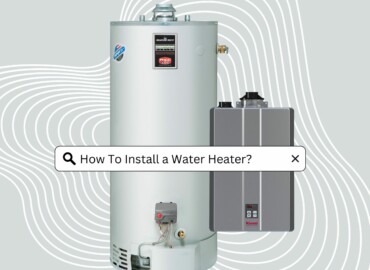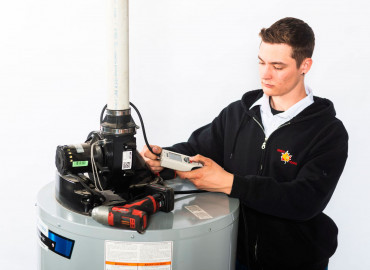HVAC Installation: A Complete Guide
When it comes to creating a comfortable living environment, the installation of a high-quality HVAC (Heating, Ventilation, and Air Conditioning) system is crucial. HVAC installation plays a significant role in maintaining optimal indoor air quality and temperature control in your home. Whether you’re building a new house or upgrading your existing system, it’s essential to understand the importance of proper installation and the benefits it can bring.
Proper HVAC installation is vital for several reasons. First and foremost, it ensures that your system functions efficiently and effectively. A well-installed HVAC system will help regulate the temperature, control humidity levels, and improve indoor air quality. This translates into a more comfortable living environment for you and your family. Additionally, proper installation reduces the risk of costly repairs and ensures the longevity of your HVAC system.
Preparing for HVAC installation
Before the HVAC installation process begins, there are a few preparations that need to be made. Start by consulting with your chosen HVAC installer to determine the appropriate system size for your home. They will consider factors such as square footage, insulation, and local climate to determine the optimal size. Once the system size is decided, the installer will work with you to select the right HVAC model that meets your needs and budget. It’s also crucial to clear the installation area and remove any obstructions that may hinder the process.
Guide For HVAC I nstallation
- Evaluation and planning: The first step in HVAC installation is evaluating your home’s needs. A professional installer will conduct a thorough assessment to determine the optimal system size and type for your home. They will also consider any specific requirements or preferences you may have.
- Ductwork installation: If your home doesn’t have existing ductwork or if the current ductwork needs replacement, the installer will proceed with installing or replacing it. Properly designed and installed ductwork ensures efficient airflow throughout your home.
- Equipment installation: Once the ductwork is in place, the HVAC equipment can be installed. This includes the furnace, air conditioner or heat pump, air handler, and any other components specific to your system. The installer will carefully connect and secure each component, following manufacturer guidelines.
- Electrical and plumbing connections: The HVAC system requires electrical and plumbing connections for it to function correctly. A professional installer will ensure that all connections are properly made and adhere to safety standards.
- Testing and calibration: After the installation is complete, the HVAC system needs to be thoroughly tested and calibrated. This includes checking for proper airflow, temperature control, and system efficiency. The installer will also make any necessary adjustments to ensure optimal performance.
- User instructions and maintenance: The final step in the HVAC installation process is providing you with user instructions and maintenance guidelines. The installer will explain how to operate the system effectively and provide tips on regular maintenance to keep it running smoothly.
Video: How To Install HVAC System
Common challenges during HVAC installation
While HVAC installation is generally a straightforward process, there can be some challenges that arise. These challenges can include issues with existing infrastructure, limited access to installation areas, or unforeseen complications during the installation process. However, by hiring a professional HVAC installer, you can minimize the impact of these challenges. Their expertise and experience allow them to handle unexpected situations efficiently and ensure a successful installation.
Testing and troubleshooting after HVAC installation
Once the HVAC system is installed, it’s essential to conduct thorough testing and troubleshooting to ensure everything is functioning correctly. This includes checking for any leaks in the ductwork, verifying proper airflow, and confirming temperature control. Additionally, the installer will test the system’s safety features and ensure that all electrical connections are secure. If any issues are identified during the testing phase, the installer will troubleshoot and make the necessary adjustments or repairs.
Maintenance tips for your HVAC system
To keep your HVAC system running smoothly and efficiently, regular maintenance is crucial. Here are some maintenance tips to help prolong the lifespan of your HVAC system:
- Change air filters regularly: Dirty air filters restrict airflow and reduce system efficiency. Replace air filters every one to three months, or as recommended by the manufacturer.
- Clean outdoor unit: Ensure that the outdoor unit is free from debris, such as leaves and twigs. Regularly clean the unit to prevent airflow obstruction.
- Schedule professional maintenance: Regular professional maintenance by a qualified HVAC technician is essential. They will inspect and clean the system, identify any potential issues, and ensure optimal performance.
- Monitor thermostat settings: Adjust thermostat settings based on your comfort needs and the season. Avoid extreme temperature fluctuations, as they can strain the system.
- Seal and insulate ductwork: Leaky ductwork can lead to energy waste and reduced system performance. Seal and insulate ducts to improve efficiency and airflow.
Benefits of professional HVAC system installation
There are several benefits to investing in professional HVAC system installation:
- Expertise and knowledge: Professional installers have the expertise and knowledge to assess your home’s needs accurately. They can recommend the most suitable system and ensure proper installation.
- Efficiency and performance: Proper installation ensures that your HVAC system operates at peak efficiency, providing optimal performance and energy savings.
- Longevity of the system: Professional installation reduces the risk of premature system failure, prolonging the lifespan of your HVAC system.
- Warranty coverage: Many HVAC manufacturers require professional installation for warranty coverage. Hiring a professional installer ensures that you meet these requirements and protect your investment.
Conclusion
HVAC installation is a crucial step in creating a comfortable and healthy living environment. By prioritizing proper installation, hiring a professional HVAC installer, and following regular maintenance practices, you can ensure that your HVAC system operates efficiently and effectively. Remember, investing in professional installation not only improves your home’s comfort but also brings long-term benefits such as energy savings and system longevity. So, take the necessary steps to ensure a successful HVAC installation and enjoy a comfortable environment in your home.



